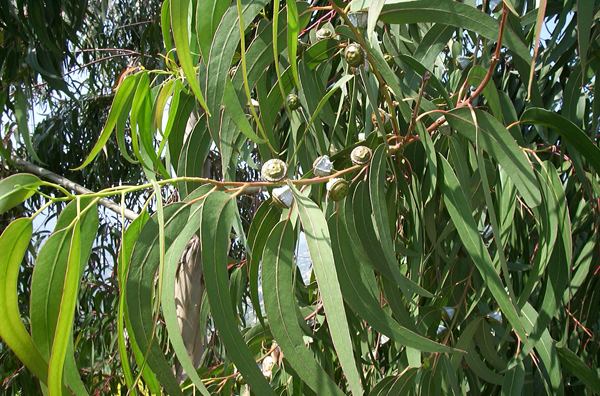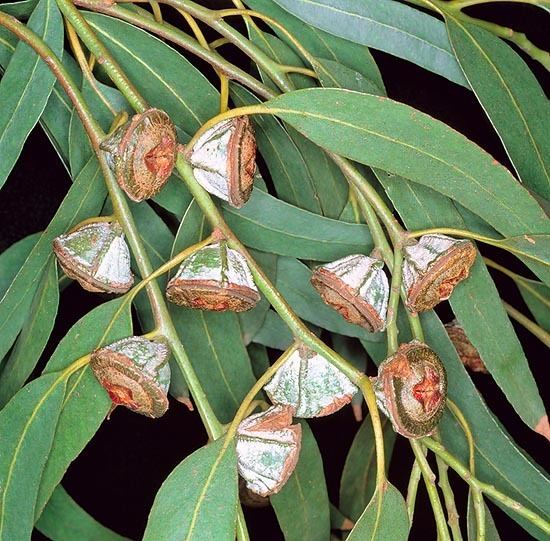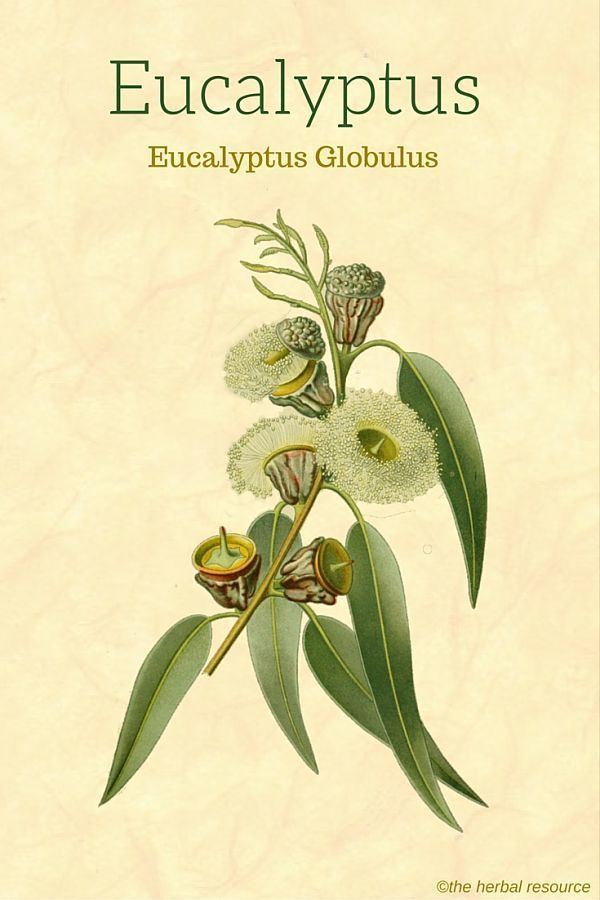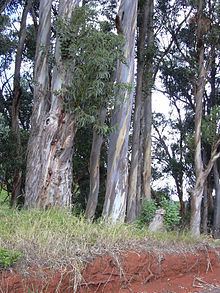Rank Species | Genus Eucalyptus Higher classification Gum trees | |
Similar Gum trees, Lemon‑scented gum, Eucalyptus radiata, Eucalyptus camaldulensis, Myrtaceae | ||
Eucalyptus globulus, the Tasmanian bluegum, southern blue-gum or blue gum, is an evergreen tree, one of the most widely cultivated trees native to Australia. They typically grow from 30–55 m (98–180 ft) tall. The tallest currently known specimen in Tasmania is 90.7 m (298 ft) tall. There are historical claims of even taller trees, the tallest being 101 m (331 ft). The natural distribution of the species includes Tasmania and southern Victoria (particularly the Otway Ranges and southern Gippsland). There are also isolated occurrences on King Island and Flinders Island in Bass Strait and on the summit of the You Yangs near Geelong. There are naturalised non-native occurrences in Spain and Portugal, and other parts of southern Europe incl. Cyprus, southern Africa, New Zealand, western United States (California), Hawaii, Macaronesia, and the Caucasus (Western Georgia).
Contents
- Eucalyptus globulus prune like a pro
- Description
- Plantations
- Timber
- Essential oil
- Herb tea
- Honey
- Phenolics
- Environmental weed
- Related species
- References

The d'Entrecasteaux expedition made immediate use of the species when they discovered it, the timber being used to improve their oared boats. The Tasmanian blue gum was proclaimed as the floral emblem of Tasmania on 27 November 1962. The species name is from the Latin globulus, a little button, referring to the shape of the operculum.

Eucalyptus globulus prune like a pro
Description

The bark sheds often, peeling in large strips. The broad juvenile leaves are borne in opposite pairs on square stems. They are about 6 to 15 cm long and covered with a blue-grey, waxy bloom, which is the origin of the common name "blue gum". The mature leaves are narrow, sickle-shaped and dark shining green. They are arranged alternately on rounded stems and range from 15–35 cm (5.9–13.8 in) in length. The buds are top-shaped, ribbed and warty and have a flattened operculum (cap on the flower bud) bearing a central knob. The cream-coloured flowers are borne singly in the leaf axils and produce copious nectar that yields a strongly flavoured honey. The fruits are woody and range from 1.5–2.5 cm (0.59–0.98 in) in diameter. Numerous small seeds are shed through valves (numbering between 3 and 6 per fruit) which open on the top of the fruit. It produces roots throughout the soil profile, rooting several feet deep in some soils.

The plant was first described by the French botanist Jacques Labillardière in his publications Relation du Voyage à la Recherche de la Pérouse (1800) and Novae Hollandiae Plantarum Specimen (1804). The author collected specimens at Recherche Bay during the d'Entrecasteaux expedition in 1792.
Plantations

Blue gum is one of the most extensively planted eucalypts. Its rapid growth and adaptability to a range of conditions is responsible for its popularity. It is especially well-suited to countries with a Mediterranean-type climate, but also grows well in high altitudes in the tropics.

It comprises 65% of all plantation hardwood in Australia with approximately 4,500 km2 (1,100,000 acres) planted. The tree is widely cultivated elsewhere in the world. It is primarily planted as a pulpwood, and also as an important fuelwood in many countries.
Blue gums have historically been used as street trees but are now regarded as unsuitable by many municipalities due to their rapid growth and mature size.
In California, thousands of E. globulus were planted from the late 1800s onward, notably by the ranch owners as windrows to protect citrus groves from the harsh Santa Ana winds, particularly in Orange County. With the decline and eventual disappearance of the citrus business and rapid suburbanisation of the area, the surviving E. globulus became increasingly seen as an important part of the suburban landscape and are currently protected by various city ordinances.
In circa 1860 Francis Cook planted the tree on Monserrate Palace his property at Sintra in Portugal and within twenty years it had attained the height of 100 m and a circumference of 5 m. By 1878 the tree ″... had spread from one end of Portugal to the other″. In 1878 the tree was also planted, partly on Cook's recommendation, in Galway, Ireland to reclaim ″... useless bog land″.
Timber
Blue gum timber is yellow-brown, fairly heavy, with an interlocked grain, and is difficult to season. It has poor lumber qualities due to growth stress problems, but can be used in construction, fence posts and poles.
Essential oil
The leaves are steam distilled to extract eucalyptus oil. E. globulus is the primary source of global eucalyptus oil production, with China being the largest commercial producer. The oil has therapeutic, perfumery, flavoring, antimicrobial and biopesticide properties. Oil yield ranges from 1.0-2.4% (fresh weight), with cineole being the major isolate. E. globulus oil has established itself internationally because it is virtually phellandrene free, a necessary characteristic for internal pharmaceutical use. In 1870, Cloez, identified and ascribed the name "eucalyptol" — now more often called cineole — to the dominant portion of E. globulus oil.
Herb tea
Tasmanian blue gum leaves are used as an herbal tea.
Honey
Blue gum flowers are considered a good source of nectar and pollen for bees.
Phenolics
E. globulus bark contains quinic, dihydroxyphenylacetic and caffeic acids, bis(hexahydroxydiphenoyl (HHDP))-glucose, galloyl-bis(HHDP)-glucose, galloyl-HHDP-glucose, isorhamentin-hexoside, quercetin-hexoside, methylellagic acid (EA)-pentose conjugate, myricetin-rhamnoside, isorhamnetin-rhamnoside, mearnsetin, phloridzin, mearnsetin-hexoside, luteolin and a proanthocyanidin B-type dimer, digalloylglucose and catechin. The hydrolyzable tannins tellimagrandin I, eucalbanin C, 2-O-digalloyl-1,3,4-tri-O-galloyl-β-D-glucose, 6-O-digalloyl-1,2,3-tri-O-galloyl-β-D-glucose, as well as gallic acid and (+)-catechin can also be isolated. Tricetin is a rare flavone aglycone found in the pollen of members of the Myrtaceae, subfamily Leptospermoideae, such as E. globulus.
Environmental weed
It was introduced to California in the mid-19th century, partly in response to the Southern Pacific Railroad's need for timber to make railroad ties, and is prominent in many parks in San Francisco and throughout the state. Naturalists, ecologists, and the United States National Park Service consider it an invasive species due to its ability to quickly spread via seeds and displace native plant communities, while local authorities, especially many fire departments across California consider it to be a major fire hazard, although the United States Department of Agriculture does not list it among its "Invasive and Noxious plants" list in California. Due to these factors, programs across the state of California have been established to remove all eucalyptus growth, and restore native biomes in certain park areas, such as on Angel Island in San Francisco Bay, and in the hills of Oakland, California.
Related species
Many botanists treat the Tasmanian Blue Gum as a subspecies of a broader species concept. This broader E. globulus includes the following subspecies:
The broader E. globulus concept is supported by Royal Botanic Gardens, Melbourne and the Tasmanian Herbarium, but not by Royal Botanic Gardens, Sydney where the four taxa are considered distinct species.
